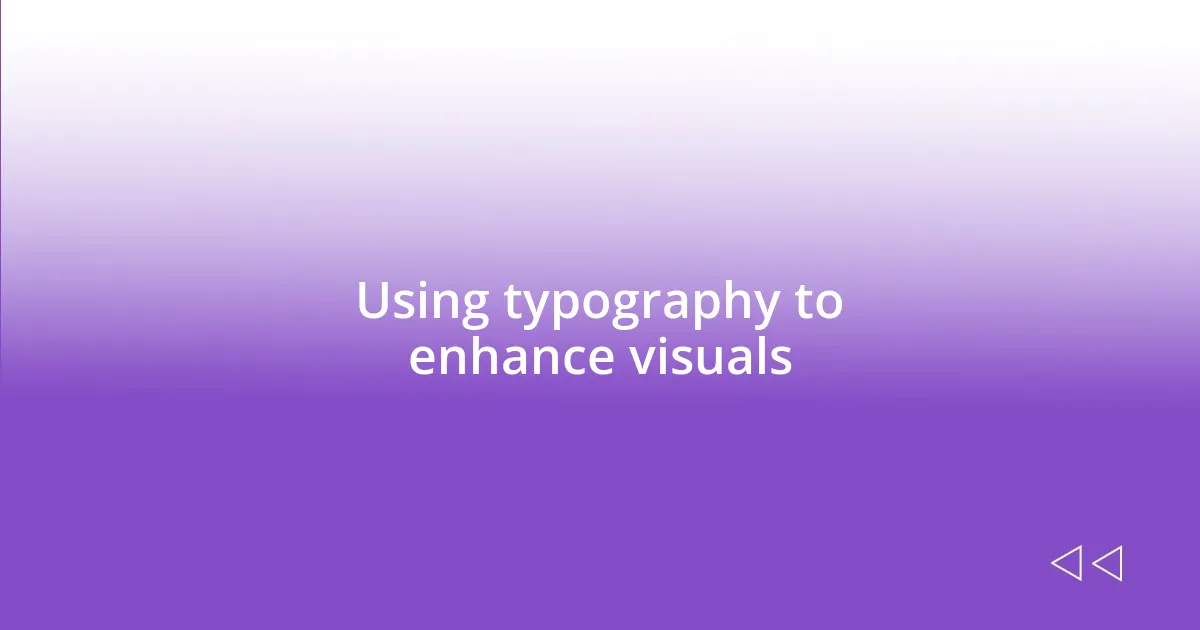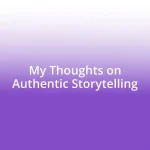Key takeaways:
- Effective integration of text and images creates a cohesive narrative that resonates with the audience.
- Typography can significantly shift the mood of a design; choices should align with the message and establish clarity.
- Limiting the color palette to two or three dominant colors enhances design clarity and emotional engagement.
- Each design element should work in harmony to evoke the intended emotions and guide viewer experience.

Understanding text and image integration
Integrating text and images isn’t just about pairing words with pictures; it’s about creating a cohesive narrative. I remember the first time I designed a poster for an event—my initial thought was just to slap an image on top of my text. It felt disjointed and awkward. When I took the time to think about how the image complemented the message, the entire piece transformed, resonating better with the audience.
Have you ever noticed how some designs stick with you while others fade into the background? That’s the magic of effective integration. When the text flows naturally with the imagery, it draws the viewer in, guiding them through the message in an engaging way. I’ve found that using strategic placement can evoke emotions, where the image acts as a visual cue that enhances the written word.
Each element should enhance the other, creating an experience that feels intentional. I often ask myself: What emotion do I want the viewer to feel? If the image evokes curiosity, perhaps the text should pique that interest further. Balancing these elements becomes a dance where both text and image work together, leaving a lasting impression on the audience.

Using typography to enhance visuals
When I experiment with typography, I often find that the choice of font can completely shift the mood of an image. For instance, I once used a bold sans-serif font over a vibrant sunset backdrop. The striking contrast not only highlighted the text but also infused the design with a modern, energetic feel. Typography can serve as a powerful storytelling tool, emphasizing key themes and emotions embedded in the visuals.
Here are some tips for using typography to enhance visuals:
- Match the Tone: Choose a font style that aligns with the message. A playful script can evoke whimsy, while a clean serif may convey professionalism.
- Contrast for Clarity: Use contrasting colors for text and background to ensure readability without detracting from the visuals.
- Hierarchy Matters: Varying font sizes can help guide the viewer’s eye and establish importance among the information being presented.
- Limit Your Choices: Sticking to two or three fonts maintains cohesion. Too many choices can overwhelm and distract from the message.
- Consider Alignment: The placement of text affects how the viewer experiences the design. Centered text can create a sense of balance, while left-aligned might feel more structured.
Reflecting on these aspects has fundamentally shifted how I approach my designs, making each project feel more polished and intentional. It’s this attention to detail that often leads to that “aha!” moment when everything clicks.

Implementing color schemes effectively
When it comes to implementing color schemes effectively, I’ve learned that the right palette can deeply impact the emotional response of the audience. I vividly remember a project where I chose soft pastels for a wellness retreat flyer. The colors not only evoked calmness, but they also harmonized beautifully with images of nature. By consciously selecting hues that resonate with the message, I was able to create a warm, inviting atmosphere that encouraged participation.
Have you ever felt overwhelmed by too many colors? It’s a common pitfall I’ve experienced. I discovered that limiting the palette to two or three dominant colors could dramatically enhance the design’s clarity and focus. This strategy not only simplifies the visual experience but also allows each element, including the text and imagery, to shine without competing for attention. Embracing this minimalist approach has often made my designs feel more intentional and powerful.
Integrating color effectively isn’t just about aesthetics; it’s a way to guide emotional engagement. I often ask myself: what story do these colors tell? For example, during a branding project for a café, I opted for earthy tones combined with vibrant greens. This not only spoke to the organic nature of their products but made the entire brand feel more connected to its sustainable mission. It’s moments like these that remind me how critical color can be in shaping perceptions and emotions in design.














